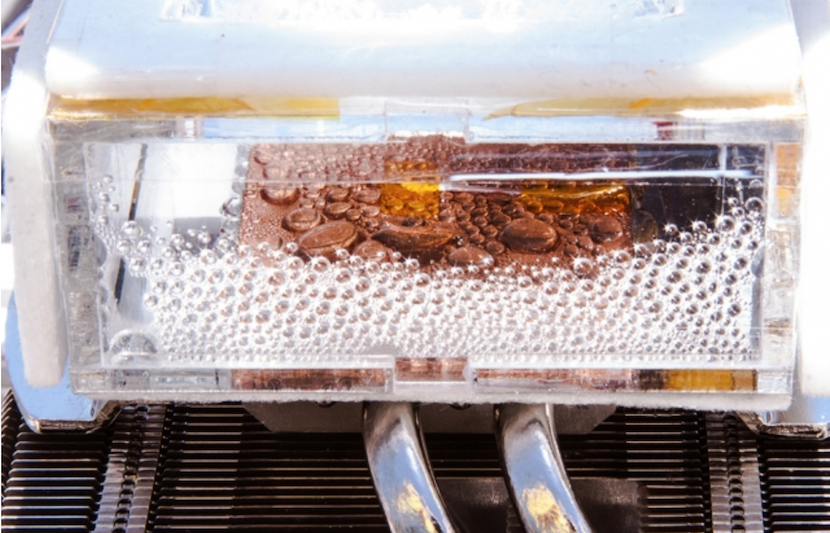In recent field tests, MIT researchers have proven that their new device can indeed pull water from desert air.
This new device, powered by sunlight, would be a godsend to areas with hot arid climate and drought-stricken regions around the world once the researchers scale up their technology.
The study is published in the journal Nature Communications.
The new device is an improvement on the concept device that was introduced last year, which was also covered by TUN.
“The advancement we have achieved over our proof-of-concept demonstration last year is the testing of a small-scale prototype in desert conditions where we believe adsorption-based water harvesting systems are most practical,” said Hyunho Kim, former MIT graduate student and co-lead author of the study.
“In addition, we have made several design improvements which enabled operation at enhanced efficiencies,” he continued.
“By careful design and optimization, we developed a device which is well-suited for operation in arid conditions and under negative dew points in which competing/commercially mature technologies such as refrigeration-based dewing cycles are infeasible.”
The device
The new device uses relatively new high-surface-area materials called metal-organic frameworks (MOFs) to absorb water molecules from the air, which turns into vapor during the day when sunlight heats it. When the vapor escapes the MOF, it is channeled into an adjacent acrylic vessel where a condenser collects the water droplets and directs them into a collector.

The study
The research team tested the new device on a rooftop at Arizona State University in Tempe, which is representative of arid areas where the device is intended to work, and proved that it can actually harvest water under real-world conditions.
According to the researchers, the new device can extract potable water even at relative humidities as low as 10 percent, so it would work even in very dry desert air.
The device’s ability to work at such low humidity levels is remarkable, as other current methods need higher levels of humidity to extract water from air. For example, fog-harvesting methods require 100 percent humidity while dew-harvesting refrigeration-based systems require above 50 percent humidity. In addition, the latter is highly dependent on energy for cooling, and is operated by pumps and compressors, which could break down.
In contrast, MIT’s new device can run solely on sunlight so it can be used anywhere as long as there is plenty of sunlight. The device also works passively so there are no broken parts to contend with.
The researchers also conducted mass-spectrometer tests of the water produced by the device, which showed no impurities.
“[T]here’s nothing from the MOF that leaches into the water,” Evelyn Wang, the Gail E. Kendall Professor in the Department of Mechanical Engineering at MIT and the senior author of both papers, said in a statement.
“It shows the material is indeed very stable, and we can get high-quality water.”
The potential
In their field tests, the researchers used a small proof-of-concept device, which was limited to over a single night-and-day cycle with sunlight. But continuous operation could be made possible by using other sustainable low-grade heat sources such as biomass and waste heat, according to Sameer Rao, MIT postdoc and co-lead author of the study.
“The operation of the adsorbent-based water harvesting cycle is driven by thermal energy,” said Rao.
“So yes, water production can be driven by waste-heat or biomass and not be restricted to solar-thermal energy.”
The researchers also believe that if the proof-of-concept device were scaled up, it would produce more than a quarter-liter of water per day per kilogram of MOF. The output could be increased threefold with the use of more optimal material, Kim said in a statement.
Their next step is to work on scaling up the system and boosting its efficiency, Wang said in a statement.
“We hope to have a system that’s able to produce liters of water,” she continued.
While the proof-of-concept device was designed to produce just a few millimeters of water, to prove that it works in the real world, she explained that their goal is “to see water pouring out!”
“We are currently working on developing a large-scale prototype, one that would be able to sustain the drinking water needs of a family in remote and arid areas,” said Wang.
“There are certainly interesting questions we are working to answer and enable higher operational efficiencies and simultaneously demonstrate the scalability of our approach.”
Once it’s scaled up, the technology will be a crucial resource in arid areas suffering from water scarcity, such as Southern California.
In some countries, where it could take girls and women several hours a day just to fetch water for household needs, this technology would free up their time so girls can go to school and women can spend quality time with their family or support their family in more meaningful ways.
“It’s really rewarding for us as scientists and engineers to be working on such technology and making developments which enable us to get closer to the realization of a full-scale device and address local water scarcity,” said Kim and Rao.



